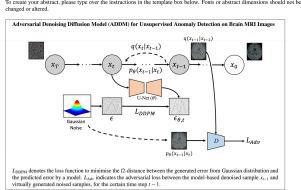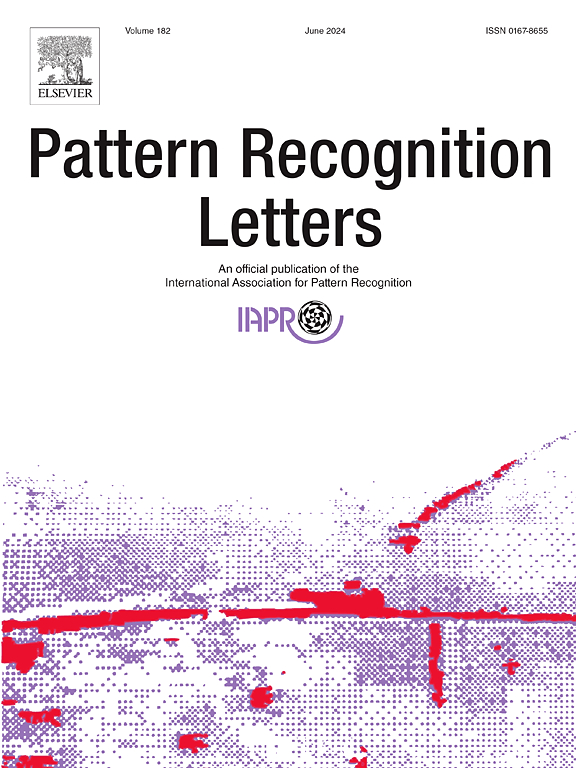利用对抗学习对扩散模型去噪,实现脑磁共振成像图像的无监督异常检测
IF 3.9
3区 计算机科学
Q2 COMPUTER SCIENCE, ARTIFICIAL INTELLIGENCE
引用次数: 0
摘要
本文提出了对抗性去噪扩散模型(ADDM)。扩散模型擅长生成高质量样本,其性能优于其他生成模型。由于其强大的采样能力,这些模型还能实现出色的医学图像异常检测(AD)结果。然而,基于扩散模型的方法的性能随采样频率的不同而变化很大,而且生成高质量样本的时间成本明显高于其他生成模型。我们提出的 ADDM 是一种基于扩散模型、经过对抗学习训练的 AD 方法,它既能保持高质量样本的生成能力,又能大大减少采样步骤。所提出的对抗学习是通过对基于模型的去噪样本和在特定采样步骤中加入随机高斯噪声的样本进行分类来实现的。扩散模型的损失函数是在噪声空间下定义的,目的是最小化预测噪声和预定噪声,与之相比,由于对抗学习是基于样本空间定义的,因此扩散模型可以明确地学习样本空间的语义信息。我们的实验证明,对抗学习有助于以更少的采样步骤实现与 DDPM 相似的数据采样性能。实验结果表明,在脑磁共振成像图像上,所提出的 ADDM 优于现有的无监督 AD 方法。特别是,在使用爱丁堡大学临床脑科学中心提供的 22 张 T1 加权 MRI 扫描图像进行的比较中,ADDM 比其他基于 DDPM 的 AD 方法减少了 50% 的采样步骤,却取得了类似的性能,而且在采样步骤相同的情况下,ADDM 比 Dice 指标高出 6.2%。本文章由计算机程序翻译,如有差异,请以英文原文为准。

Denoising diffusion model with adversarial learning for unsupervised anomaly detection on brain MRI images
This paper proposes the Adversarial Denoising Diffusion Model (ADDM). Diffusion models excel at generating high-quality samples, outperforming other generative models. These models also achieve outstanding medical image anomaly detection (AD) results due to their strong sampling ability. However, the performance of the diffusion model-based methods is highly varied depending on the sampling frequency, and the time cost to generate good-quality samples is significantly higher than that of other generative models. We propose the ADDM, a diffusion model-based AD method trained with adversarial learning that can maintain high-quality sample generation ability and significantly reduce the number of sampling steps. The proposed adversarial learning is achieved by classifying model-based denoised samples and samples to which random Gaussian noise is added to a specific sampling step. Compared with the loss function of diffusion models, defined under the noise space to minimise the predicted noise and scheduled noise, the diffusion model can explicitly learn semantic information about the sample space since adversarial learning is defined based on the sample space. Our experiment demonstrated that adversarial learning helps achieve a data sampling performance similar to the DDPM with much fewer sampling steps. Experimental results show that the proposed ADDM outperformed existing unsupervised AD methods on Brain MRI images. In particular, in the comparison using 22 T1-weighted MRI scans provided by the Centre for Clinical Brain Sciences from the University of Edinburgh, the ADDM achieves similar performance with 50% fewer sampling steps than other DDPM-based AD methods, and it shows 6.2% better performance about the Dice metric with the same number of sampling steps.
求助全文
通过发布文献求助,成功后即可免费获取论文全文。
去求助
来源期刊

Pattern Recognition Letters
工程技术-计算机:人工智能
CiteScore
12.40
自引率
5.90%
发文量
287
审稿时长
9.1 months
期刊介绍:
Pattern Recognition Letters aims at rapid publication of concise articles of a broad interest in pattern recognition.
Subject areas include all the current fields of interest represented by the Technical Committees of the International Association of Pattern Recognition, and other developing themes involving learning and recognition.
 求助内容:
求助内容: 应助结果提醒方式:
应助结果提醒方式:


